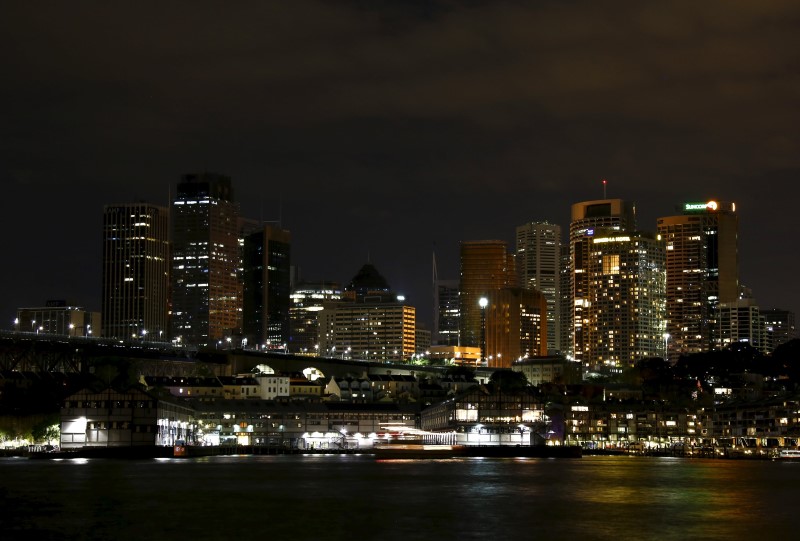By Swati Pandey
SYDNEY, April 21 (Reuters) - Australia's government has succeeded in borrowing record amounts of money at all-time low yields as a huge thirst for liquid, AAA-rated paper absorbs the sovereign debt deluge hitting markets.
Like other countries, Australia has launched enormous fiscal stimulus to keep businesses alive as the coronavirus pandemic shuts down large parts of the economy. unprecedented borrowing needed to fund this has triggered concerns about Australia's creditworthiness, oversupply and whether the financial system can cope with the massive issuance.
So far, however, the rush of debt has been handily snapped up by a mix of domestic and foreign buyers, keeping three-year yields AU3YT=RR near all-time lows at 0.27% with barely a flutter. Encouragingly, this has happened even as the central bank tempers its asset purchases.
"The reason we would buy Australian government bonds is that it has a very strong credit rating, and will retain a high relative rating even if it were downgraded in the future," said Grant Hassell, AMP Capital Global Head of Fixed Income.
"Its (10-year) yield at just under 1% is higher than most other developed markets and still attractive."
This month, the Australian Office of Financial Management (AOFM), which manages the government's debt, has sold A$19.6 billion ($12.44 billion) of bonds and A$11.5 billion of short-term notes, far above past levels.
The AOFM plans to issue another A$11 billion this week after a record A$13 billion syndication last week.
Analysts reckon it might have to borrow around A$60 billion by the end of June alone, and perhaps another A$150 billion in the 2020/21 fiscal year.
To cushion the massive hit to growth, the Reserve Bank of Australia (RBA) in March announced quantitative easing in its first foray into unconventional policy, pledging to do "what it takes" to keep three-year yields around the cash rate of 0.25%.
During the initial stages of its "unlimited" QE, which started March 20, the RBA bought A$3 billion to A$4 billion per day.
That initial splurge helped steady the market after some initial ructions, which were driven by big mismatches between buyers and sellers and a wider scramble for U.S. dollars.
But the need for such intervention has since eased, with RBA purchases falling to A$4 billion for all of last week. key is that market functioning has improved – and that's why they were purchasing the larger volumes in the first place," said Robert Thompson, rates strategist at RBC. "If bond markets stay reasonably functional, they will keep tapering, possibly to zero."
The RBA's various measures have meant the three-month bank bill swap rate (BBSW), the benchmark used to price trillions of dollars worth of loans, is now below the cash rate for the first time ever.
Analysts say the BBSW is likely to stay low as banks are not in need of funding imminently.
While the RBA has pared its bond operations, analysts are not convinced it will go back to being a complete bystander.
"Our baseline is still for the RBA to buy at least 50% of the net increase in ACGB supply over the next 15 months," ANZ rates strategist Jack Chambers wrote in a note.
He cautioned early "tapering" was sending a signal at odds with other central banks.
By comparison, the U.S. Federal Reserve has aggressively bought Treasuries since March 13 as part of its QE programme. From March 19 to April 1, it bought $75 billion per day although this pace is expected to slow. yield on U.S. 10-year is at 0.65% and we are at 0.85% so there is still a 20 basis point yield pick up there," said Jon Sheridan, associate director, fixed income sales at FIIG Securities.
"For non-U.S. and non-Aussie managers, if you can work out a (currency) hedge then you'd definitely want to come to Australia."
($1 = 1.5755 Australian dollars)
